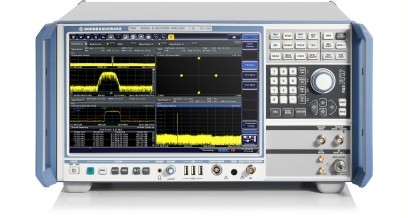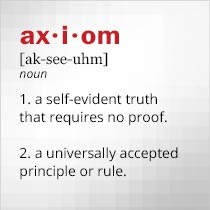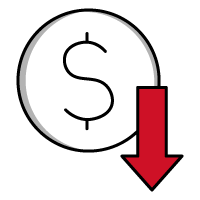Getting The Call For 5G Network Testing
June 05, 2018
 |
More time is spent on mobile telephones than ever before, and that is not a trend that is about to change anytime soon with the coming of Fifth Generation (5G) wireless communications networks. If anything, 5G networks are being ballyhooed as historic landmarks in the history of the world, with so many users growing to become dependent upon those wireless networks for voice, video, and data from personal to business matters. Of course, 5G networks will have some things that previous wireless communications networks didn’t have, including the use of millimeter-wave signal frequencies for backhaul high-speed data links. Current Fourth Generation (4G) cellular wireless network boast maximum download speeds to 1 Gb/s, but 5G proponents are promising much more, with download speeds as high as 20 Gb/s. 5G is being heralded as the greatest advance in human communications since the knock on a front door and, equipped with usable bandwidths from RF through millimeter-wave frequencies, it may be capable of delivering on all of its promise, but such network equipment must be installed and tested first, and signal analyzers and signal generators are critical pieces of test equipment for getting those 5G networks running properly.
The 5G NR Specification
The development pace of 5G networks and equipment is accelerating, as evidenced by the release of the 5G New Radio (NR) specification created by the Third Generation Partnership Program (3GPP) for worldwide use. The scope of 5G is vast, with networks being developed on a true international scale, requiring the design and development of hardware and software in support of consumer, commercial, and government/military products. In addition to the radio access network (RAN) technology embodied by the 5G NR specification, 5G wireless networks will make extensive use of millimeter-wave signal frequencies, moving past signal frequencies below 6 GHz traditionally used by 4G Long Term Evolution (4G LTE) and earlier cellular telephone generations and making use of available bandwidths at 28 GHz and higher, through 60 GHz and beyond.
Moving to Millimeter Waves
At lower frequencies, 5G networks are expected to be backwardly compatible with earlier generations of commercial wireless communications systems, such as 4G LTE. Because the earlier systems did not employ millimeter-wave frequencies, however, users of equipment for those networks will not be able to take advantage of the short-range, high-data-rate communications being promised for millimeter-wave links. Wireless systems developers are discussing a number of different link frequencies where bandwidth is available, such as 28 GHz, 32 GHz, and even as high as 70 and 80 GHz. A great deal of channel modeling remains to be done, since the propagation losses are much higher at millimeter-wave frequencies (approximately 30 to 300 GHz) than at RF/microwave frequencies. Because of 5G’s truly international scope, the International Telecommunications Union (ITU) has released a coherent plan for international 5G standardization, with the expectation of publishing its first-generation of IMT-2020 specifications for 5G in 2020.
In addition to millimeter-wave frequencies, 5G will employ technologies such as adaptive beamforming to overcome some of the signal path losses common at millimeter-wave frequencies. Advanced antenna design techniques, such as multiple-input, multiple-output (MIMO) antennas, will be used throughout 5G networks, requiring test equipment, such as signal generators, capable of producing multiple simultaneous signals from characterizing 5G equipment.
A great deal of the challenge in designing wireless communications networks and user equipment for such high signal frequencies is the need to perform reliable measurements on new designs through the accurate generation and analysis of millimeter-wave signal frequencies. Fortunately, proven signal generators and analyzers are commercially available with the performance needed in support of emerging 5G networks and user equipment. A number of trusted test equipment manufacturers, for example, now offer test signal sources that use such techniques as harmonic mixing or arbitrary waveform generation to produce stable test signals with reasonably high output power levels.
5G Signal Generators
As an example, the Rohde & Schwarz SMW200A vector signal generator features a modular architecture for flexibility. It is available in many different frequency ranges, from as narrow as 100 kHz to 3 GHz to as wide as 100 kHz to 40 GHz. It is well suited for testing 4G LTE systems and will be readily upgradeable for testing future versions of 5G wireless networks and user equipment. While it can be used as a conventional signal generator with a single output signal, it can also provide as many as eight separately controllable output signals and can be used for creating as many as 16 fading channels as currently employed in characterizing 4G LTE-Advanced (4G LTE-A) wireless networks and eventually 5G wireless networks with their multiple-channel MIMO receivers. In addition, test signal sources such as the Tektronix AWG70001A or AWG70002A use arbitrary waveform generation to produce test signals as high as 20 GHz with wide spurious free dynamic range. The outputs of multiple units can be multiplied and synchronized as needed to produce advanced waveform streams without an additional personal computer (PC).
Also, the Keysight N5183B signal generator is also available in various frequency ranges as needed, from 9 kHz to 13 GHz through 9 kHz to 40 GHz, with outstanding spectral purity. The phase noise is a low -124 dBc/Hz offset 10 kHz from a 10 GHz carrier. This is an extremely flexible test signal source, for 4G or 5G, capable of pulse generation and a variety of modulation types, including AM, FM, and pulse modulation.
Analyzing 5G Bands
On the analysis side of 5G testing, Keysight Technologies also offers a range of high-frequency spectrum analyzers, including the 8560EC series, in particular, the model 8565EC. Its standard frequency range of 30 Hz to 50 GHz can handle the lower bands of 5G’s millimeter-wave frequency range while, with external frequency mixing, the 8565EC can be extended to as high as 325 GHz. In terms of pure built-in analysis power, few instruments can match the Rohde & Schwarz FSW67 signal and spectrum analyzer for 5G testing. It provides as much as 500 MHz analysis bandwidth from 2 Hz to 67 GHz with a greater than 100-dB spurious-free dynamic range. When 5G user equipment is ready for testing, the Rohde & Schwarz FSW67 will have the measurement speed, with 0-Hz sweeps as fast as 1 μs and wider sweeps of 10 Hz and more with sweep speeds as fast as 3 μs.
5G is being heralded as the greatest advance in communications since smoke signals. Its use of millimeter-wave frequency bands will deliver streaming video and extremely high-speed data along with reliable voice communications, but its advanced technologies will also require leading-edge test signal sources and analyzers. As noted above, Axiom Test Equipment has the signal generators and analyzers that meet the needs of 5G testing and are available for rent or sale by visiting Axiom’s website at www.axiomtest.com, contacting Axiom Test Equipment’s sales department at sales@axiomtest.com, or by calling an Axiom sales representative at 760-806-6600.
Back to BLOG








